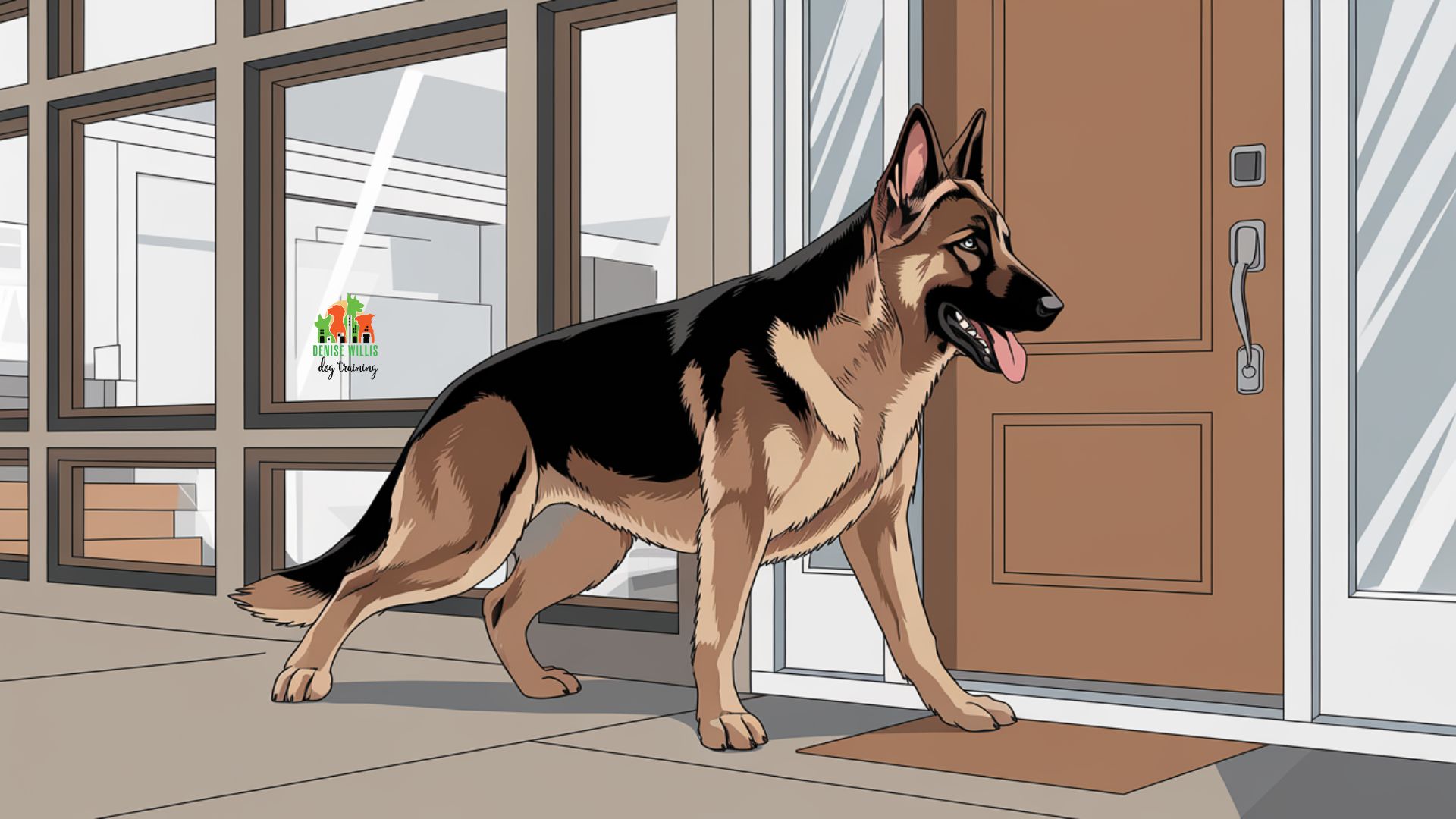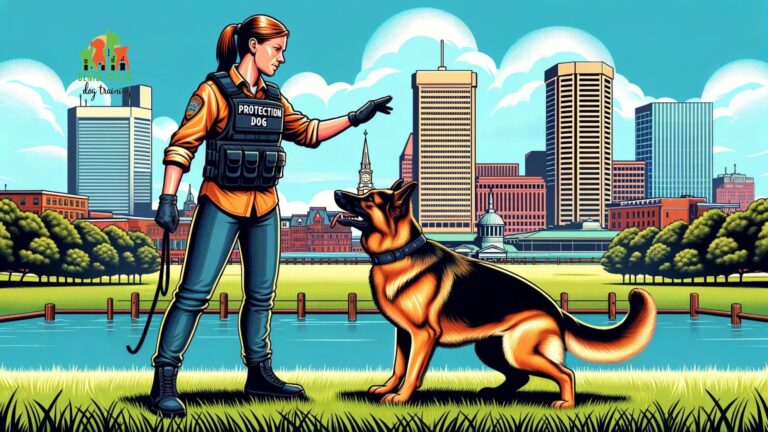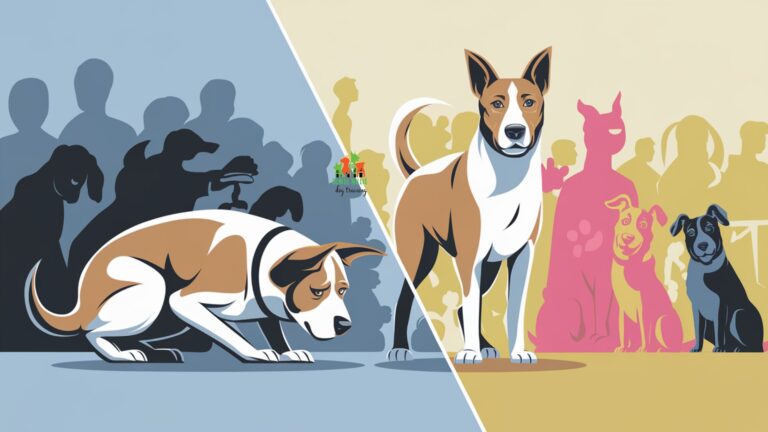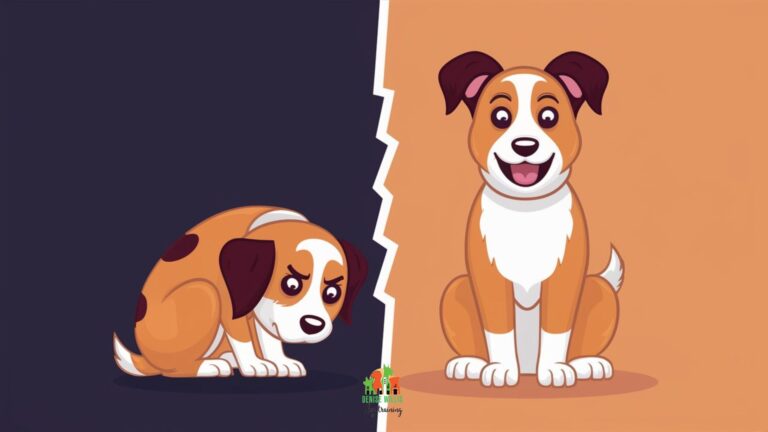My Dog’s House, My Dog’s Rules: Managing Territorial Dog Aggression in the Home
📍 Service Area Notice: DW Dog Training provides in-person training services exclusively in the Greater Baltimore area. While our blog content is designed to help dog owners internationally, our hands-on training services are locally focused. For readers outside our service area, we hope you find value in our articles and welcome you to reach out with questions!
The Amazon delivery driver steps onto my client Janet’s porch, package in hand. Inside, Max, a stunning German Shepherd with intelligence that matches his looks, transforms from a family pet to a self-appointed security force. His bark thunders through the house as he charges the door, hackles raised. Janet clutches his collar, face flushed with embarrassment and frustration.
“He’s never bitten anyone,” she assures me, “but I live in constant fear that he might.” It’s a scene that plays out in homes across America, where dogs like Max turn routine deliveries into crisis management situations and casual drop-ins into carefully choreographed operations.
As a professional dog trainer with over two decades of experience, I’ve watched territorial dog aggression evolve alongside our changing lifestyles. The rise of home delivery services, remote work, and our increasingly connected world has transformed our dogs’ environments. Every Ring doorbell chime, every passing neighbor, and every UPS truck becomes another chance for our dogs to rehearse protective behaviors that, while natural, can spiral into dangerous territory.
Key Takeaways
- Territorial aggression stems from survival instincts, not dominance or disobedience
- Early warning signs include:
- Intense barking at windows and doors
- Growling at visitors
- Aggressive displays near property boundaries
- Management requires:
- Environmental control
- Behavior modification
- Consistent training protocols
- Professional intervention proves crucial for severe cases
- Prevention through early socialization is ideal, but existing cases can improve significantly
Understanding Territorial Dog Behavior
Warning Signs
Common signs include intense barking at windows, growling at visitors, and aggressive displays near property boundaries.
Key Statistics
61% of dogs presented to behaviorists show human-directed aggression, with 38.55% exhibiting aggression toward their owners.
Training Impact
Dogs attending puppy training classes show decreased risk for aggression toward unfamiliar humans and better socialization.
Management Solutions
Successful management combines environmental control, behavior modification, and consistent training protocols.
Understanding Territorial Aggression
Every dog owner’s journey with territorial aggression begins with a crucial revelation: what we perceive as aggression often starts as anxiety. That fierce barking, those hackles raised along your dog’s spine, the charging at windows – these aren’t signs of a “bad dog” but rather a complex interplay of instinct, fear, and learned behavior. Understanding this fundamental truth transforms how we approach the problem.
The Psychology Behind Territory Protection
Think of your dog’s territorial instincts like an ancient security system – one that evolved long before Ring doorbells and motion-sensor lights. In the wild, protecting resources meant survival. Territory meant safety, food, and the ability to raise offspring successfully. Our modern dogs inherit this sophisticated system of behaviors, but they’re trying to apply stone-age solutions to digital-age problems.
Key territorial triggers include:
- Unfamiliar people approaching the property
- Sudden movements visible through windows
- Sounds associated with visitors
- Changes in routine or environment
Walking through Janet’s home, I point out how Max’s environment feeds his territorial responses.
The large picture window offering a stunning view of the street?
For Max, it’s like being forced to watch a constant stream of potential threats with no ability to investigate properly. That corner of the couch where he perches to patrol the neighborhood?
It’s not just a comfortable spot. It’s his security command center, and every successful bark that “drives away” a passerby reinforces his self-appointed role.
Warning Signs and Progression
Most owners don’t realize they’re watching territorial aggression develop until it’s fully entrenched. The progression follows a predictable pattern, but it’s subtle enough that warning signs often go unnoticed. Working with another client’s Border Collie, I trace the behavior’s evolution through distinct stages:
Early Warning Signs:
- Increased alertness to outdoor movements
- Intensifying reactions to doorbells
- Progressive barking patterns
- Mounting tension in body language
Advanced Indicators:
- Aggressive displays behind barriers
- Charging at windows or fences
- Difficulty calming after triggers
- Expanding territorial boundaries
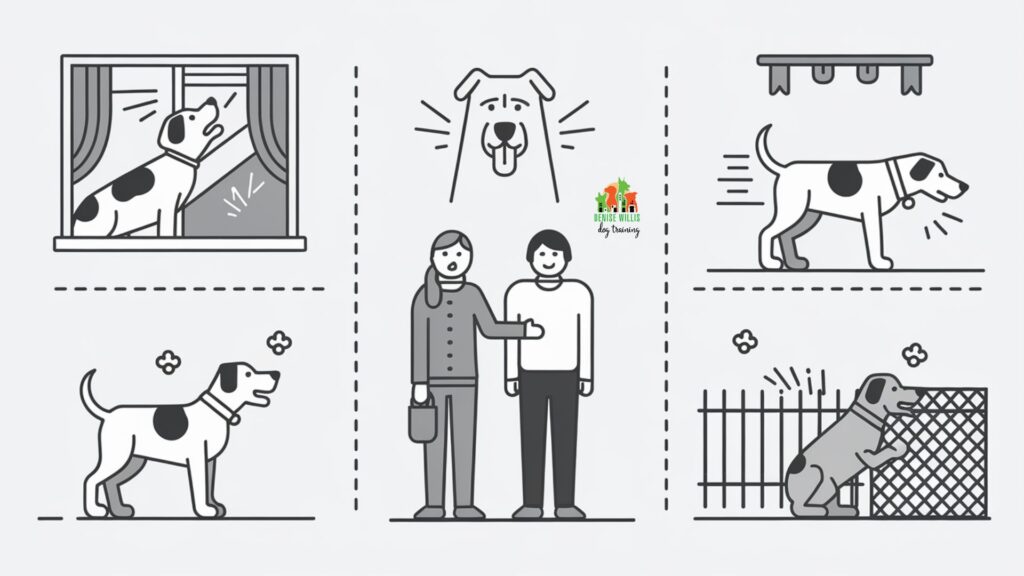
The Numbers Behind the Barks: Territorial Aggression Statistics
Think your protective pooch is the only one treating your home like Fort Knox?
The statistics tell a different story!
As a trainer working with countless territorial defenders, I’ve seen these numbers play out in living rooms across America. Let’s dive into some eye-opening data that shows just how common (and complex) territorial aggression really is.
| Behavior Type | Percentage | Details | Source |
|---|---|---|---|
| General Dog Aggression | 16-35% | Dogs showing canine-directed aggression | [3] |
| Human-Directed Aggression | 61% | Dogs presented to behaviorists showing aggression toward humans | [3] |
| Owner-Directed Aggression | 38.55% | Dogs showing aggression toward their owners | [3] |
| Stranger-Directed Aggression | 21.95% | Dogs showing aggression toward unfamiliar humans | [3] |
| Fight Frequency (High) | 19% | Dogs fighting more than once daily | [2] |
| Fight Frequency (Low) | 52% | Dogs fighting 1-3 times per month or less | [2] |
| Injury Rate (Household) | 78% | Household aggression cases involving minor or serious injury | [2] |
| Non-Injury Rate (Non-Household) | 56% | Non-household aggression cases resulting in no injuries | [2] |
These numbers paint a clear picture: territorial and aggressive behaviors aren’t just your problem. They’re a challenge many dog owners face. But here’s the silver lining: understanding these statistics helps us recognize that these behaviors aren’t random acts of canine rebellion. They’re patterns we can identify, understand, and most importantly, modify through proper training and management. So, the next time your furry security guard goes into overdrive, remember: you’re not alone in this journey, and with the right approach, positive change is absolutely possible.
Root Causes and Contributing Factors
Understanding why dogs develop territorial aggression requires looking beyond the surface-level behaviors to the complex interplay of genetics, environment, and learned responses. Like a perfect storm, these elements combine to create defensive responses that can seem overwhelming to owners. Yet understanding these fundamental drivers provides the key to developing effective management strategies.
Genetic Predisposition
Nature plays an undeniable role in territorial behavior patterns. Through centuries of selective breeding, humans have created dogs with heightened protective instincts. This genetic blueprint influences how readily a dog might display territorial responses.
Breed-Specific Tendencies:
- Guardian breeds: Strong protective instincts
- Herding breeds: Heightened environmental awareness
- Working breeds: Natural territorial inclinations
- Companion breeds: Varying protective responses
Environmental Triggers
Modern living environments create unique challenges for our dogs’ territorial instincts. The constant stream of delivery personnel, neighbors walking past windows, and unusual noises can overwhelm even the most well-adjusted dog. Understanding these triggers helps create effective management strategies.
Common Environmental Catalysts:
- High-traffic areas visible from windows
- Frequent deliveries or visitor patterns
- Neighboring dogs or activities
- Changes in household routine
Fear and Anxiety Components
At the heart of most territorial aggression lies a complex web of fear and anxiety responses. While these dogs may appear confident in their displays, their aggression often masks deeper insecurities about their ability to handle perceived threats. Working with a Doberman named Duke, I witnessed this transformation firsthand – his fierce territorial displays melted away once we addressed his underlying anxiety about strangers.
Primary Anxiety Factors:
- Past negative experiences
- Lack of early socialization
- Genetic predisposition to fearfulness
- Environmental insecurity
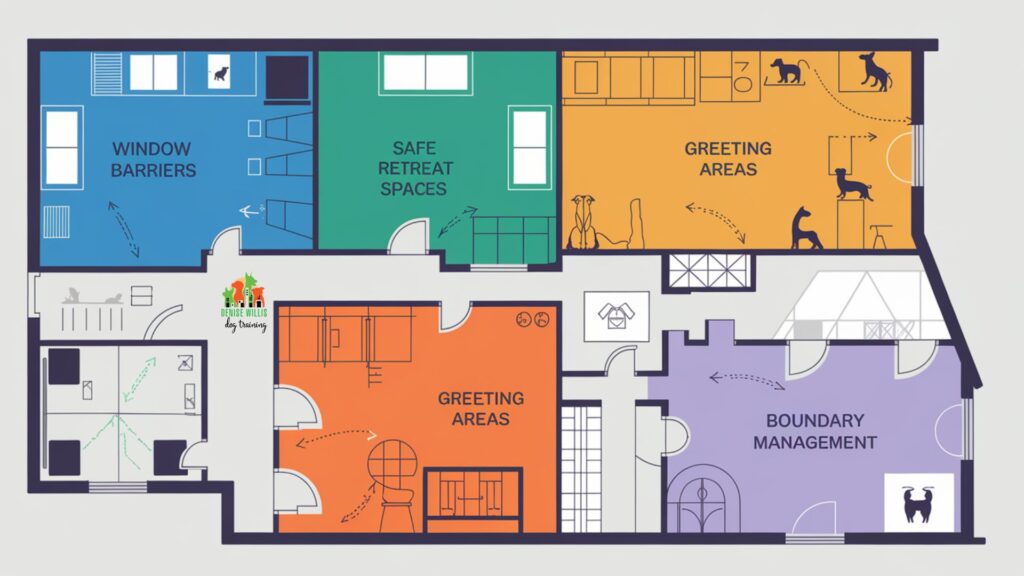
Management Strategies
Successfully managing territorial aggression requires a comprehensive approach that addresses both immediate safety concerns and long-term behavior modification. Think of it as rehabilitation for both dog and owner – everyone needs to learn new patterns and responses.
Daily Management Routine
Janet’s success with Max came from implementing a structured daily routine that anticipated and prevented territorial responses before they could occur. Like an athlete training for competition, each day followed a carefully orchestrated pattern designed to set both dog and owner up for success.
Morning Protocol:
- Early exercise before trigger times
- Structured training sessions
- Management of visual access
- Calm-inducing activities
Evening Components:
- Decompression time after work
- Controlled exposure periods
- Safe space utilization
- Relaxation exercises
Training Fundamentals
Establishing solid training foundations transforms reactive dogs into responsive companions. Through years of working with territorially aggressive dogs, I’ve found that success hinges not on complex protocols but on mastery of fundamental skills. These core commands become the building blocks of more sophisticated behavior modification. Creating reliable responses under calm conditions provides the framework needed when dealing with territorial triggers.
Essential Commands:
- Emergency recall: Creates instant disengagement
- Place command: Provides a safe retreat
- Leave it: Interrupts fixation
- Watch me: Redirects attention
- Down-stay: Enforces calm behavior
Long-term Behavior Modification
Moving beyond basic management requires systematic behavior modification. This process mirrors athletic training – you wouldn’t expect someone to run a marathon without proper conditioning. Similarly, dogs need progressive exposure and practice to develop new responses to territorial triggers. Success comes through carefully planned stages that build upon each other.
Modification Components:
- Systematic desensitization
- Counter-conditioning exercises
- Confidence building activities
- Graduated exposure protocols
Development and Management of Territorial Aggression
Initial Assessment Phase
Environmental control setup, basic command mastery, trigger identification, and safe space establishment mark the first 1-3 months of management. This foundation phase sets the stage for all future progress.
Intermediate Training (3-6 months)
Focus shifts to controlled exposure exercises, distance threshold work, and duration building. This period often brings the most visible progress as dogs begin making better choices and showing increased emotional control.
Advanced Management
Systematic desensitization, counter-conditioning exercises, and confidence building activities become the focus. Success comes through carefully planned stages that build upon each other.
Maintenance Phase
Long-term success requires regular skill refreshers, proactive management strategies, ongoing socialization opportunities, and consistent monitoring of stress thresholds. Territorial tendencies require lifelong awareness.
Special Situations
Every home presents unique challenges when dealing with territorial aggression. Working through Manhattan apartments to sprawling suburban properties, I’ve encountered countless variations that require customized approaches. The core principles remain constant, but their application must adapt to specific circumstances and family dynamics.
Multi-Dog Households
Managing territorial aggression becomes exponentially more complex when multiple dogs share the same space. Like orchestrating a symphony, each dog’s responses influence the others, creating intricate patterns of behavior that require careful management. The goal becomes not just modifying individual behaviors but harmonizing the entire pack’s responses.
Management Priorities:
- Individual safe spaces
- Separate training sessions
- Clear boundary establishment
- Structured group interactions
Crisis Management
Even well-managed dogs can have moments of regression or face unexpected triggers. Preparing for these situations proves as crucial as daily training. Like having a fire evacuation plan, every family needs clear protocols for handling territorial episodes. These emergency responses prevent minor incidents from escalating into serious confrontations.
Emergency Response Protocol
When territorial responses escalate beyond normal management techniques, having established emergency procedures becomes critical. These protocols provide clear, actionable steps that any family member can implement. Success in crisis moments comes from practiced responses that become almost automatic.
Immediate Actions:
- Rapid environment control
- Emergency recall implementation
- Safe space utilization
- Trigger removal when possible
De-escalation Techniques
When territorial displays reach their peak, proper de-escalation becomes an art form. Through countless interventions with aggressive dogs, I’ve refined techniques that can turn potential disasters into manageable situations. The key lies in understanding the subtleties of canine body language and the precise timing of intervention. These methods require practice but become invaluable tools in any owner’s arsenal.
Core De-escalation Methods:
- Body blocking with proper positioning
- Pattern interruption techniques
- Controlled spatial pressure
- Calming signals and cues
- Redirection to known behaviors
Training Plan Timeline
Success with territorial aggression doesn’t happen overnight. Like any significant behavior modification, progress follows a predictable pattern when proper protocols are followed. Working with hundreds of cases has revealed clear phases that most dogs move through during rehabilitation. Understanding this timeline helps owners maintain realistic expectations and recognize genuine progress.
Initial Phase (1-3 months)
The foundation phase sets the stage for all future progress. During this critical period, focus centers on management and basic skill building. Like laying the groundwork for a house, this phase may not show dramatic external changes but creates the stability needed for lasting improvement. Janet’s work with Max during these first months transformed their daily routine from chaos to structured calm.
Primary Focus Areas:
- Environmental management setup
- Basic command mastery
- Trigger identification
- Safe space establishment
- Routine development
Intermediate Phase (3-6 months)
As basic skills solidify, controlled exposure work begins. This phase requires delicate balance – pushing boundaries while maintaining safety and confidence. Working with a territorially aggressive Rottweiler named Tank, we discovered this period often brings the most visible progress. Owners start seeing their dogs make better choices and show increased emotional control around previous triggers.
Progressive Goals:
- Controlled exposure exercises
- Distance threshold work
- Duration building
- Distraction training
- Advanced obedience integration
Maintenance Phase
The journey doesn’t end when initial progress appears. Maintaining improved behavior requires ongoing commitment and understanding of potential setbacks. Think of it like maintaining physical fitness – without regular exercise, skills and control can deteriorate. During this phase, focus shifts from intensive training to lifestyle integration and proactive management. Success stories like Max’s remind us that territorial tendencies require lifelong awareness, even after dramatic improvement.
Maintenance Priorities:
- Regular skill refreshers
- Proactive management strategies
- Ongoing socialization opportunities
- Stress threshold monitoring
- Environmental enrichment activities
Tools and Resources
Professional dog training relies heavily on proper equipment selection and usage. Through years of experience, I’ve refined my toolkit to include only the most effective and humane options for managing territorial aggression. Each tool serves a specific purpose in the rehabilitation process, from management to active training phases.
Essential Equipment
The right equipment transforms challenging situations into manageable moments. Working with clients across Baltimore, I’ve seen proper tool selection make the difference between success and failure. However, equipment alone never solves territorial aggression – it simply provides mechanical advantage during the learning process.
Management Tools:
- Head halters for precise control
- Front-clip harnesses for reduced pulling
- Baby gates for space management
- Window film for visual barrier control
- Long lines for distance work
- High-value reward pouches
Training Aids:
- Marker devices for precise timing
- Food puzzles for mental stimulation
- Calming aids (ThunderShirts, etc.)
- Training platforms for place work
- Digital cameras for progress tracking
Professional Intervention
Even experienced dog owners often need professional guidance when dealing with territorial aggression. The complexity of this behavior pattern, combined with safety concerns, makes expert intervention crucial for many cases. Understanding when and how to seek help can make the difference between success and failure in behavior modification.
When to Seek Help
Professional intervention becomes necessary in specific situations. Through years of consultations, patterns emerge that indicate when owners should stop attempting solo management. The key lies in recognizing these indicators before serious incidents occur. Early intervention often leads to faster progress and better outcomes.
Red Flags for Professional Help:
- Escalating aggressive displays
- Multiple bite incidents
- Failed management attempts
- Family tension over dog’s behavior
- Children in the household
- Multiple dogs showing aggression
Types of Professional Support
Navigating professional dog training services can feel overwhelming. The field encompasses various approaches and specialties, each serving different needs in territorial aggression cases. Like seeking medical care, matching the right professional to your situation dramatically impacts success rates. Understanding these distinctions helps owners make informed decisions about their dog’s care.
Professional Options:
- Veterinary behaviorists for medical intervention
- Certified behavior consultants for complex cases
- Professional trainers for ongoing support
- Veterinarians for health screening
- Group class instructors for controlled socialization
Product Recommendations
The joys of shopping for a dog with protective tendencies!
It’s like preparing for a four-legged superhero who thinks every delivery person is a supervillain. We’ve assembled a collection of gadgets that would make even Batman’s utility belt jealous. Let’s help you dive into the world of canine crime-fighting… er, I mean, behavior management tools!
- ThunderShirt Classic Anxiety Vest for Dogs: Is your dog auditioning for the role of “Fun Police” at the local park? Wrap them in this snug jacket and watch them transform from Captain America to Bruce Banner. Warning: May cause your dog to believe they’re being hugged by a very persistent octopus.
- Freedom No-Pull Dog Harness: Turn your four-legged bodyguard into a perfect gentleman with this harness. It’s like a steering wheel for your dog, minus the horn and airbags. Caution: Your dog may temporarily believe they’ve joined a secret dog society where everyone wears fancy accessories.
- StarMark Bob-A-Lot Interactive Dog Toy: Keep your canine Sherlock Holmes busy with this interactive puzzle. It’s like “Escape Room: Doggy Edition,” but with treats instead of clues. Warning: May turn your dog into a treat-finding savant who starts solving your Sudoku puzzles.
- KONG Extreme Dog Toy: The Swiss Army knife of dog toys, perfect for redirecting your pup’s protective instincts. It’s like a chew toy, puzzle, and stress ball all rolled into one rubber cone of joy. Caution: Your dog may start expecting you to stuff their entire dinner into this magical black cone.
- Zuke’s Mini Naturals Training Dog Treats: These tiny treats are perfect for rewarding good behavior. They’re like doggy cryptocurrencies – small, valuable, and your dog will do anything to get more. Caution: Your dog may start expecting these for every minor achievement, like successfully napping or heroically guarding against the evil mailman.
Here’s the thing about transforming your personal protection pup – it’s less about the gadgets and more about the giggles along the way. These tools aren’t magic wands (though wouldn’t that be nice?), but they’re guaranteed to make training more fun than a squirrel convention in a dog park.
And hey, maybe after enough positive reinforcement, your pup will realize that being the neighborhood welcome wagon beats being its SWAT team any day of the week.
Further Reading
You’ve made it this far in your quest to understand the mysterious world of canine protective instincts.
But why stop now?
Dive deeper into the doggy psyche with these paw-some articles.
Warning: Side effects may include spontaneous tail-wagging and an irresistible urge to say “Who’s a good boy?”
- 10 Warning Signs Your Dog Might Bite and How to Prevent It: Think your dog’s just smiling with extra teeth? Think again! This article decodes the secret language of canine warnings. Spoiler alert: If your dog starts speaking in Morse code, you’ve probably missed a few earlier signs.
- Decoding Your Dog: 15 Body Language Signals You Need to Know: Ever wish your dog came with subtitles? This guide is the next best thing! Learn to read your dog’s body language like a pro. Caution: May result in you unconsciously tilting your head and wagging your behind when excited.
- How to Manage Your Dog’s Territorial Aggression: Is your dog trying to claim the entire neighborhood as their kingdom? This article helps you negotiate a peace treaty. Bonus: Includes tips on explaining property laws to your furry friend.
- 5 Proven Strategies to Stop Your Dog’s Aggression Towards Other Dogs: Transform your canine confrontationalist into a doggy diplomat with these strategies. Warning: Your dog may start organizing peace summits at the local park.
- Dog Aggression Solutions: A Complete Guide to Stopping Aggressive Behavior in Dogs: The ultimate playbook for tackling canine aggression. It’s like “The Art of War” for dog training, minus the ancient Chinese philosophy (unless your dog is into that).
Time to unleash your inner dog behavior detective!
These articles are your training treats for the mind – devour them wisely. Just remember, while reading won’t instantly make you the next Victoria Stilwell, it’ll definitely make you the most popular human at the dog park… especially if you keep those treat pockets full!
Frequently Asked Questions About Territorial Dog Aggression in the Home
Dog owners consistently raise certain questions about territorial aggression. Through countless consultations and training sessions, patterns emerge in these concerns. Addressing these common questions helps owners understand both the challenges and possibilities in managing territorial behavior. The answers below reflect real-world experience with hundreds of cases.
Q: How do I stop my dog from being territorial at home?
A: Success requires a comprehensive approach combining environmental management, behavior modification, and consistent training. Make environmental changes to reduce triggers, teach settling on cue, establish strong recall, practice controlled meetings with new people, address underlying anxiety, and work on systematic desensitization. No single technique solves territorial aggression – improvement comes through consistent application of multiple strategies.
Q: Why is my dog territorial in the house?
A: Territorial behaviors represent deeply ingrained survival instincts. Dogs naturally guard territory and resources because these behaviors historically improved survival odds. Modern living situations can intensify these natural tendencies, especially when dogs lack proper outlets or face constant triggering situations. Understanding this biological basis helps owners approach the problem with patience and realistic expectations.
Q: Can territorial aggression in dogs be cured?
A: While complete elimination rarely occurs, especially in guardian breeds, proper treatment and management significantly reduce frequency and intensity. Success focuses on control and management rather than cure. Think of it like managing a chronic condition – with proper care and attention, symptoms can be minimized even if the underlying tendency remains.
Q: How do I stop my dog from being aggressive at home?
A: Management centers on creating predictable interactions, avoiding trigger situations, maintaining good exercise routines, and ensuring adequate social interaction and mental stimulation. Improvement requires consistency in application of training principles combined with realistic expectations. Professional guidance often accelerates progress and ensures safety during the modification process.
Test Your Knowledge: Territorial Dog Behavior
Final Thoughts
Living with and rehabilitating a territorially aggressive dog challenges even experienced owners. The journey requires patience, consistency, and often professional support. Through my years working with dogs like Max, Tank, and countless others, I've witnessed remarkable transformations when owners commit to proper management and training protocols.
Success stories emerge when owners understand that managing territorial aggression involves more than just training - it requires lifestyle changes and long-term commitment. The rewards, however, prove worth the effort. Watching formerly reactive dogs learn to relax as visitors arrive or calmly observe neighborhood activities demonstrates the power of proper training and management.
For those struggling with territorial aggression, remember that help is available. At DW Dog Training, we specialize in transforming reactive dogs into confident, well-adjusted family members. Through personalized training programs and ongoing support, we guide owners through the complexity of territorial aggression management, creating lasting positive changes one dog at a time.
Your Feedback
Your experiences matter.
Every dog's journey with territorial aggression presents unique challenges and victories. Share your story, ask questions, or connect with other owners facing similar challenges. Together, we build a community of understanding and support for dogs and owners alike.
Have you successfully managed territorial aggression in your dog?
Are you currently struggling with these behaviors?
Join the conversation and help others learn from your experience.

